b l o g
f e b r u a r y 2 0 2 1
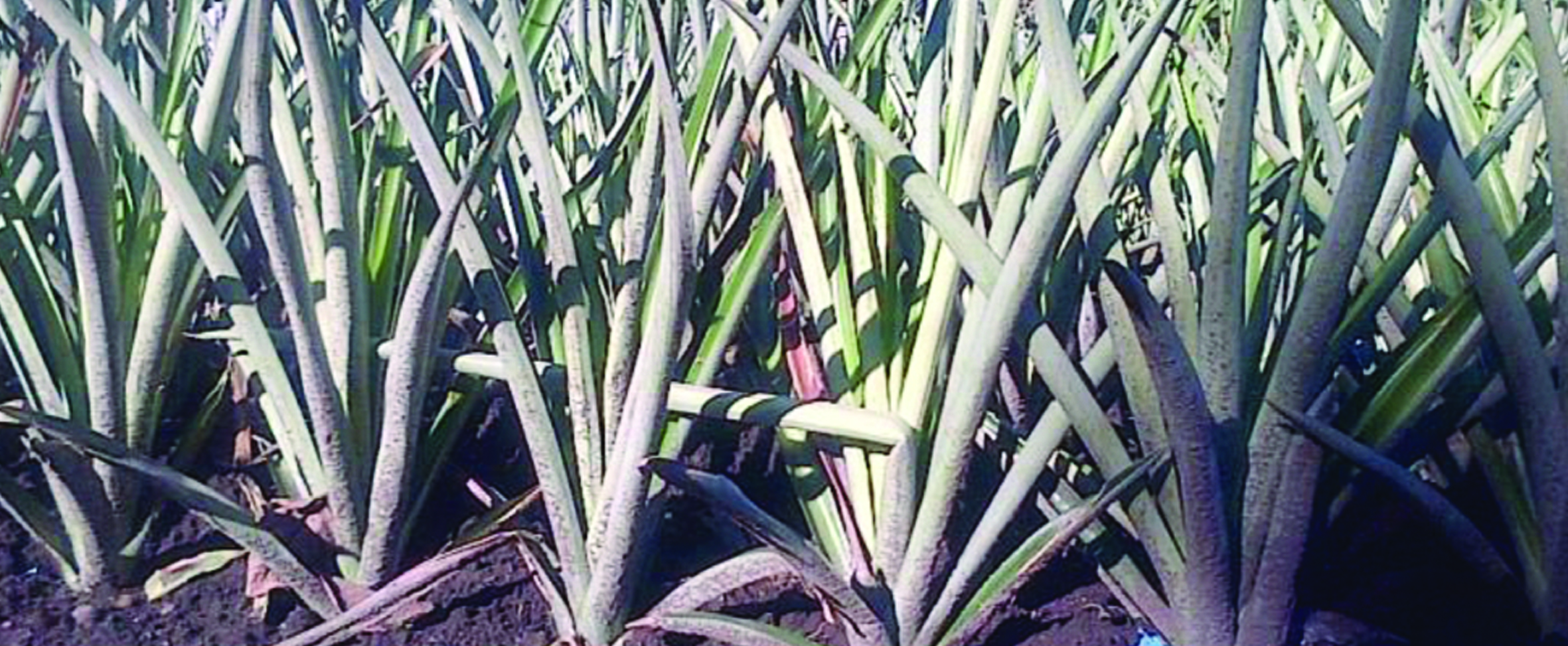
Pineapple cropping requires full commitment from the farmer in terms of weed control and plant nutrition, otherwise the farmer will get little to nil production
By Aad Van Santen, Lead Author of Pineapple Production In Vanuatu
Pineapples are multiplied and planted by vegetative planting material and not through seed. This means parts of the old mother plants are used for planting, which gives the same ‘generic’ or ‘parent like’ characteristics as the basic plant the material is picked from.
It is necessary to select the good growing and producing plants to get your planting material from. It is also important that the parts collected from the mother plant are healthy and whole, otherwise a diseased or slow developing plant will be the result.
Different parts of the pineapple plant can be used for direct planting in the filed with each having their different growing characteristics and development stages. For uniform plant development it is important to plant material with the same development stages and characteristics together in the same units or beds.
The same varieties must also be planted together in the same planting units. If more than one variety is grown each variety has to be planted separate from others, since these often have different maintenance and care requirements.
Varieties
It is important to select planting material from varieties that are good producing and well accepted in the market. Smooth Cayenne (‘Hawaiian pineapple’) is well accepted on the local Vanuatu market as well as on the export markets. Ripley Queen is well known in the local Vanuatu market, but is rather new in the overseas markets.
Smooth Cayenne
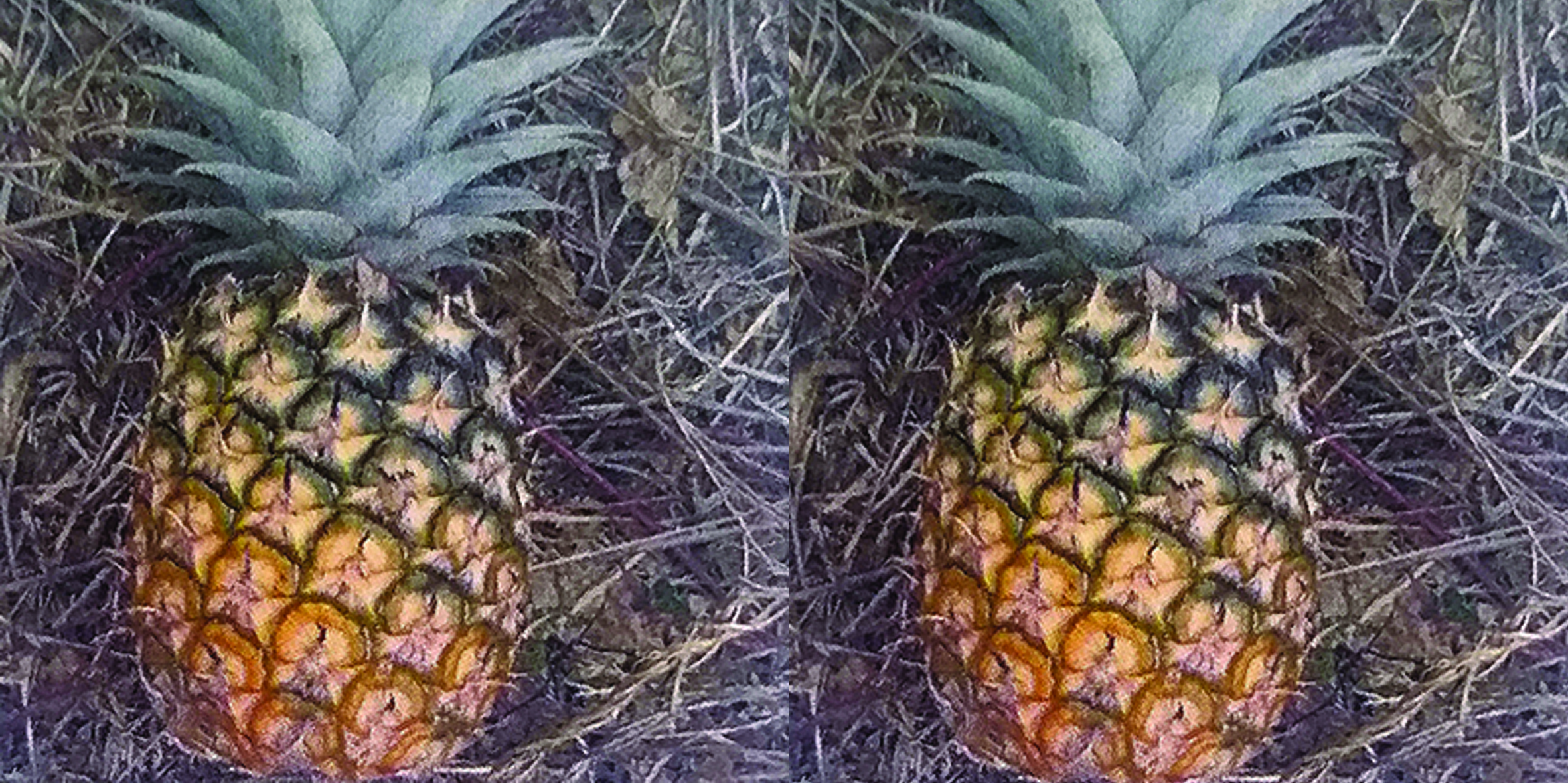
Smooth Cayenne (Hawaiian pineapple). Has wide, dark green leaves with no or almost no spines (thorns) on the leaf edges and is easy to work.
It has a large, juicy fruit at optimal maturity. The juice is sweet with a recognizable ‘pineapple’ flavor. The mature fruit is rather soft and more sensitive to transport and handling damage.
Produces few (only one or two) or even no side shoots, often too few to expand.
Ripley Queen
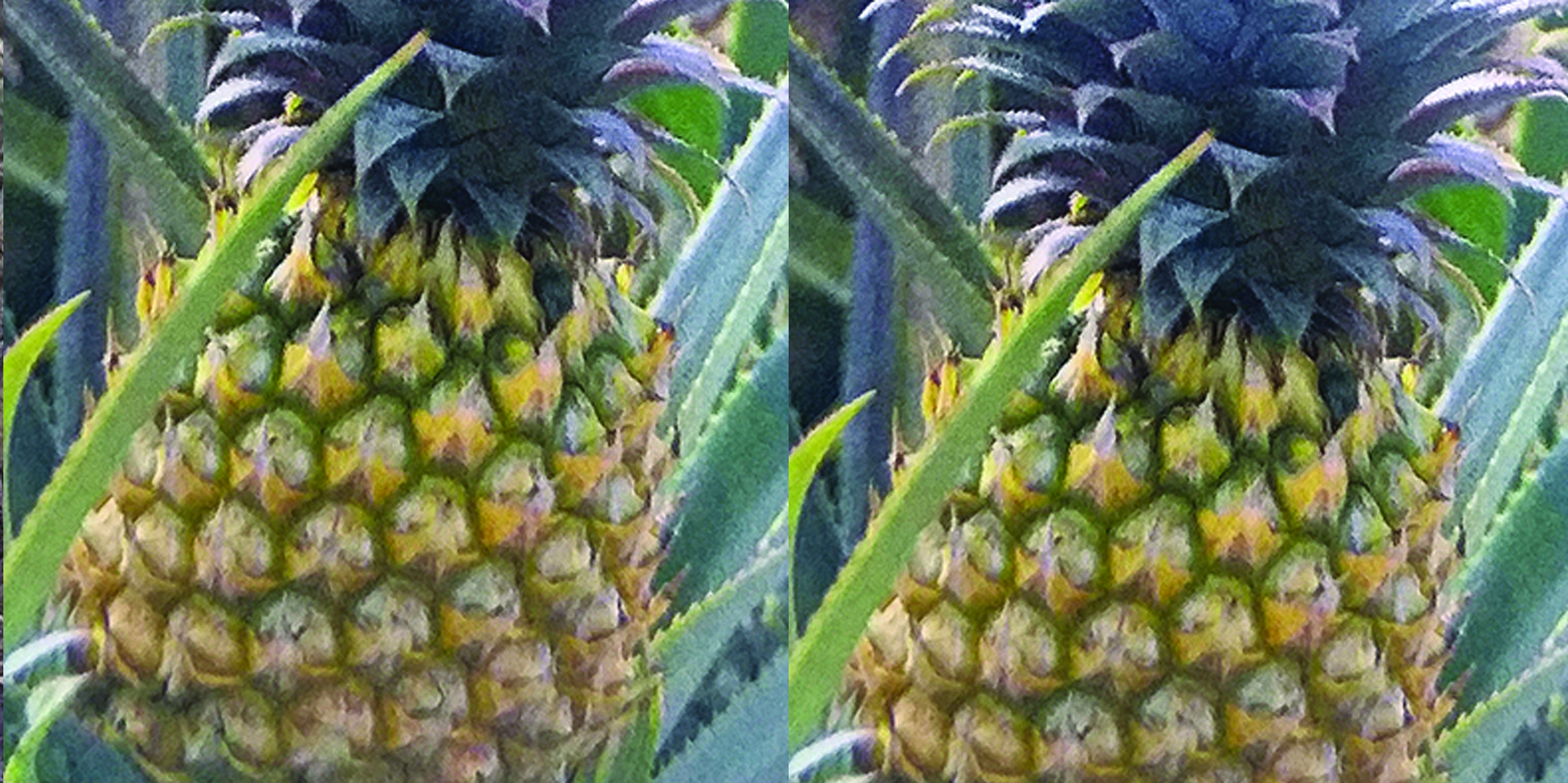
The Ripley Queen has narrow, long leaves, which are light green, blending to yellow in color. The leaves have large spines on each side, Fruits have strong outward protruding eyelets and rind (skin) is light yellow in color. Fruit flesh has a distinctive spicy flavor. Fruit is rather hard and less sensitive to transport damage.
Fruits tend to be a bit smaller than the Smooth Cayenne fruits. Produces 3-5 new side shoots.
Some lesser known varieties on the local and overseas markets can be found growing on Efate and Santo including ‘Abacaxi’ or ‘Perola’ and the ‘Singapore Spanish’. These varieties have less market importance, but still have demand, especially for the processing industry.
Perola or Abacaxi
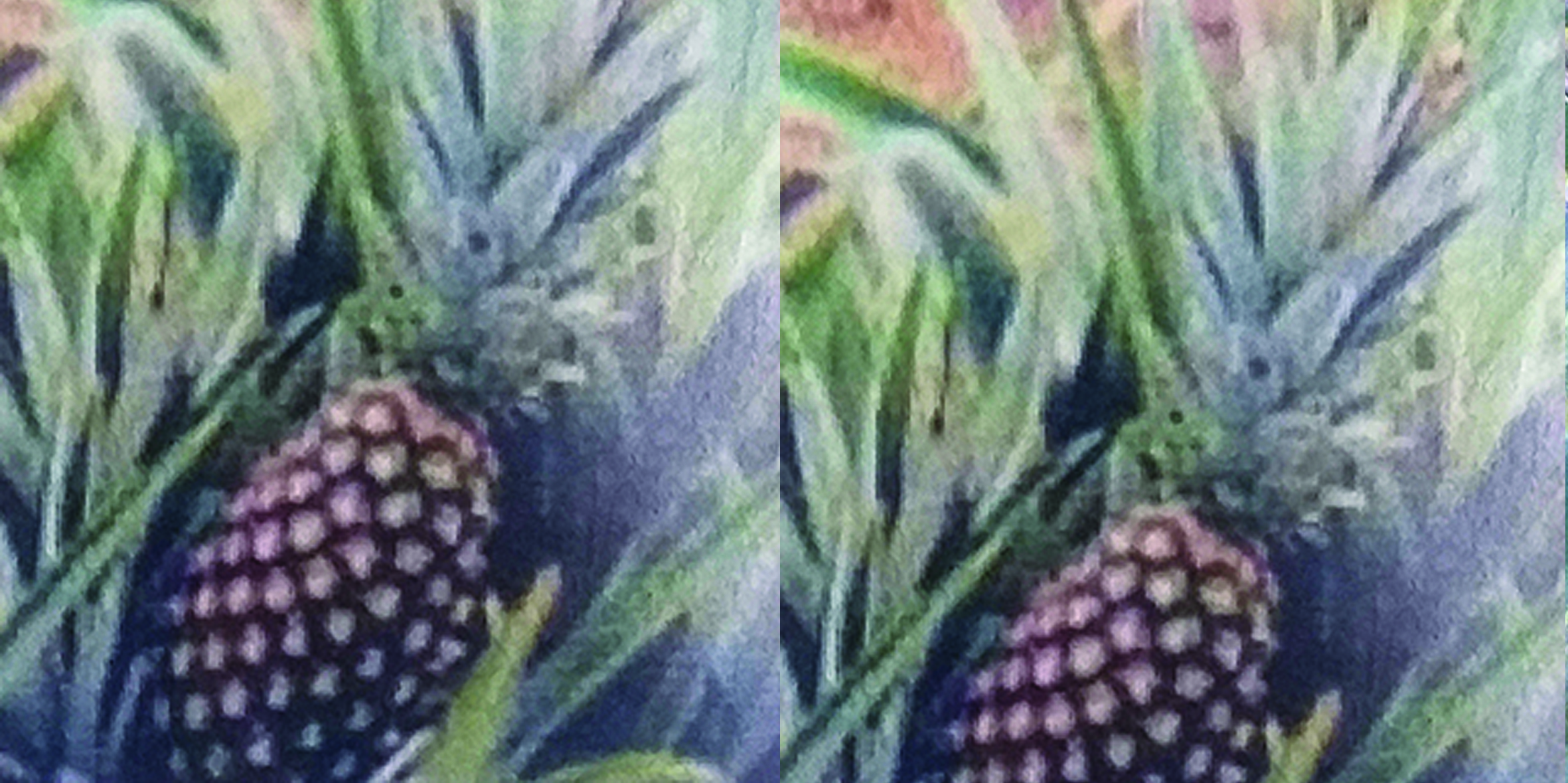
The Perola or Abacaxi have long erect fark green leaves with fine spines. Mature and ripe fruit is oblong to conical in shape and from 1-1.5kg in size.
Ripe fruit is still green with center of the eyelets showing some yellow. Fruit flesh is white and juicy, with a unique flavor. Often numerous slips develop just under the fruit base.
The Perola variety is highly tolerant to Phytophtora disease, nematodes and drought.
Singapore Spanish
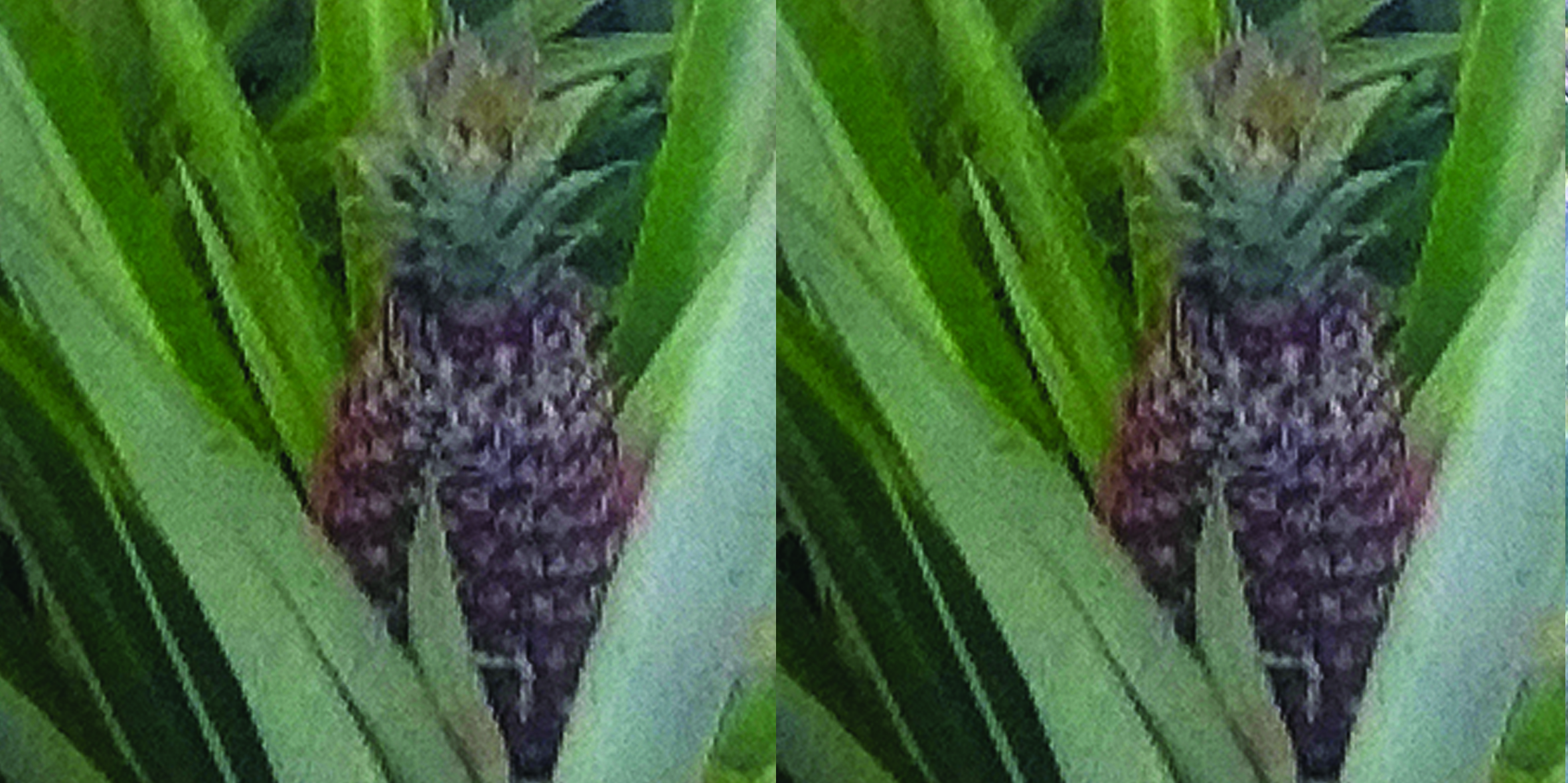
The Singapore Spanish is basically a processing fruit. It has bright green leaves, which can vary from spineless to a few spines on the top of the leaves.
Fruit is cylindrical with red color leaf bracts. Fruit weight is generally small, with rather poor flavor, but good juice quality.
Plant is adapted to high soil pH (soils with high coral and sand content). Plant produces many slips and hapas.
Types of Planting Material
In addition to considering the different varieties, one must also consider the use of different parts of the pineapple plants for planting material. Each of the options described below have their specific advantages and disadvantages, especially as it relates to fruiting behavior and growth potential.
Consider the following options when deciding on your planting material.
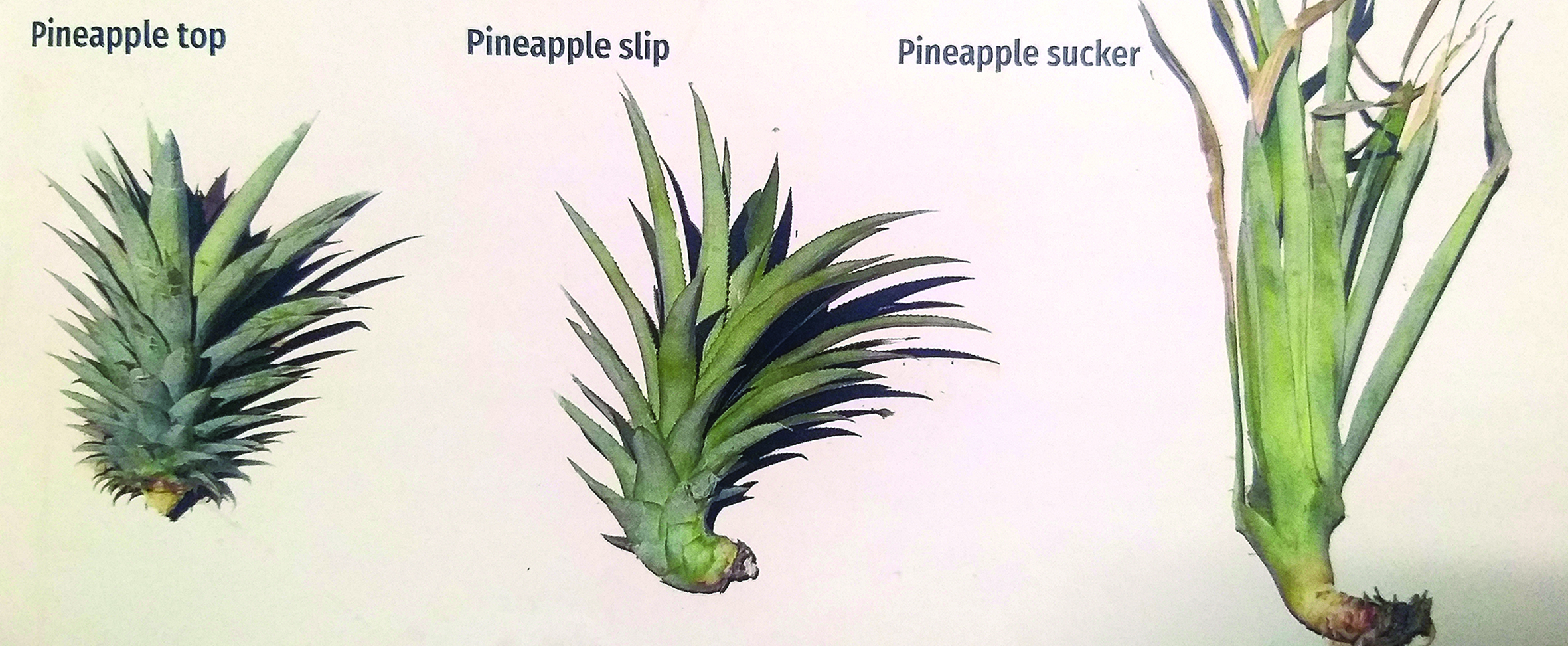
Suckers and Hapas
Both are the side shoots from the fruit bearing plant and weigh 350g to 1kg.
Smooth Cayenne produces only a few suckers and hapas, while Ripely Queen produces more hapas.
Tops or Crowns
The vegetative (leaf rosette) top end of the mature fruit.
Tops are rather equal in size and between 225-275g. Less voluminous than the suckers and hapas.
Slips
These are the side-shoots that develop on the fruit stem or just under the fruit. They should weigh between 150-250g.
Nursery Plantlets
All these different planting material types have slightly different growing characteristics, especially in the initial stages of the crop development;
(a) Tops will develop slightly slower than suckers, and hapas of the same size and weight.
(b) Slips and nursery plantlets have a slower development pattern than the latter two.
(c) Suckers and hapas produce a less uniform crop, with greater differences in individual plants.
(d) Suckers and hapas are easier to force in flowering than tops or slips.
Next: Site Selection
